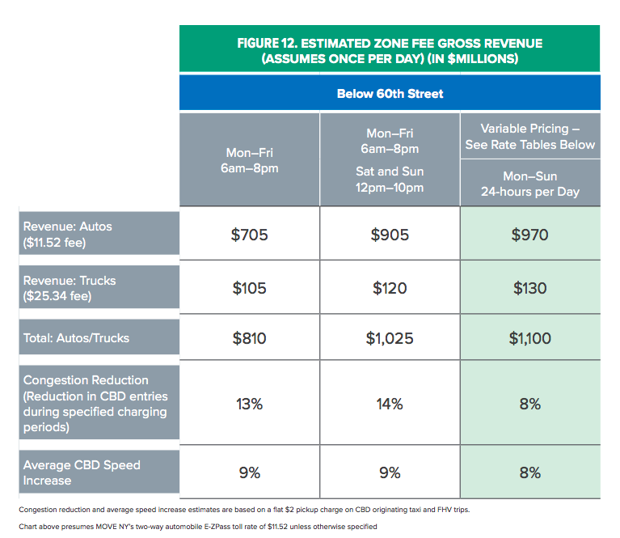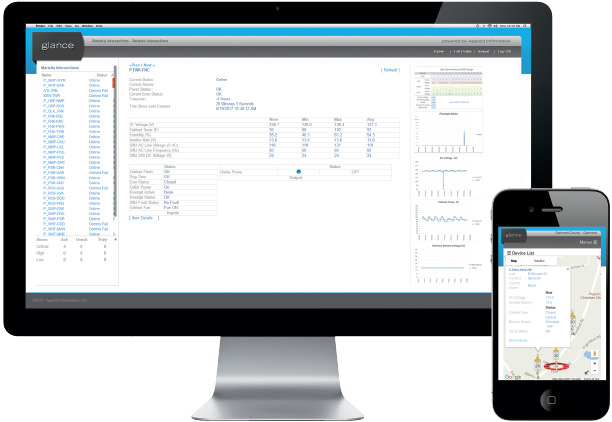
Anyone who has driven in Los Angeles will attest that traffic congestion is a major problem, but what they may not realize is that the city ranks worst for congestion in the entire world. In fact, the list of top 25 worst cities for traffic is dominated by cities in the United States—all of them large and fast-growing.
Let’s take a look at how much this traffic costs each year and some strategies that cities use to reduce these costs.
How Much Does Traffic Really Cost?
Traffic congestion cost the United States $305 billion in 2017, according to INRIX, which represents a $10 billion increase from 2016. In Los Angeles, the average driver spends over 100 hours sitting in traffic, costing the city more than $19 billion and each driver $2,828.

The cost includes lost productivity, increases in the cost of transporting goods through congested areas, increases in fuel costs, and other factors. Aside from these expenses, any driver can attest that traffic congestion causes tremendous stress and vehicles are a major source of carbon emissions.
Despite these high costs, the average driver continues to put on more miles. Total mileage across the United States reached an all-time high of 3.2 trillion last year thanks to falling fuel prices, growing populations, unreliable transit, and new ride-hailing apps like Uber and Lyft.
These trends suggest that traffic congestion and costs will get worse before they improve.
Strategies for Reducing Congestion
The two most popular solution for alleviating traffic congestion are improving public transportation and establishing road fares. While there are trade-offs and mixed evidence for both strategies, they represent the most common solutions that big cities are implementing.
[content_upgrade cu_id=”2878″]Download our printable checklist of strategies to reduce traffic congestion.[content_upgrade_button]Click Here[/content_upgrade_button][/content_upgrade]
Improving Public Transit
There’s evidence that public transportation helps reduce congestion. In October 2003, Los Angeles transit workers went on strike for 35 days and the average delay on major freeways increased 47 percent during peak hours. The problem is that public transit typically involves a significant investment.
Several major cities, including Los Angeles, Seattle, and Denver, are making major investments in public transit in a bid to reduce traffic on the roads. These investments come despite cuts in federal funding for transit projects, including the popular TIGER competitive grant program.
Introducing Road Fares
Road fares have also proven to be successful in reducing traffic congestion. In 2012, an Italian court suddenly eliminated congestion pricing on Milan’s roads and traffic immediately soared nearly 20 percent. The problem is that fares could have a number of hidden costs.
In New York, regulators are considering congestion fares as a way to reduce traffic. Entering Manhattan during a busy time of the day would cost $11.52 for cars and $25.34 for trucks. The move could raise $810 million to help fund the fledgling MTA system and improve public transit options.

Chicago has also started implementing a surcharge on all for-hire vehicles in the city center to discourage idle driving and unnecessary trips. While not a standard road fare, the proceeds from these surcharges will likely be sent to the CTA to improve public transit options across the city.
New Technologies Bring Down Costs
New smart city technologies aim to reduce congestion and traffic costs without the high cost of public transit or the unintended consequences of road fares. Rather, these solutions try to dynamically optimize the flow of traffic to reduce wait times at red lights and keep everyone moving.
The most popular smart city solutions for reducing congestion is adaptive signal control technologies (ASCT). In Portland, adaptive signal timing reduced congestion along busy commuter roads by 20 to 30 percent. These solutions work particularly well on corridors with unpredictable traffic patterns.
There are many other smart city technologies that can help improve traffic congestion and safety as well:
- Smart Preemption Systems: Avoid traffic congestion near hospitals with smart preemption systems, which are designed to clear routes efficiently for emergency vehicles.
- Smart Pedestrian Crosswalks: Avoid stopping traffic for too long at pedestrian crosswalks, while encouraging more people to walk or bike in busy areas.
- Connected Vehicles & Pedestrians: Help vehicles and pedestrians communicate with each other and traffic infrastructure through their vehicles or smart phones.
Smart City in Action
Atlanta’s Smart Corridor is a great example of how smart city technologies are being deployed to reduce congestion. With over a hundred connected sensors at eighteen signalized intersections, the project leverages adaptive signal timing and vehicle-to-vehicle communication to reduce crashes and improve traffic flow.

The Smart Corridor project is powered by Applied Information’s Glance Smart City Supervisory System, which enables the city to manage all of its traffic and ITS assets within a single web-based application. In addition, the project uses the TravelSafely app to connect vehicles to pedestrians, traffic infrastructure and each other.
While many other strategies involve high costs, smart city technologies are both affordable and effective. Applied Information’s smart city technologies can be added to existing infrastructure. Since they use cellular technology, there’s no need for cities to lay down expensive fiber.
The Bottom Line
Traffic congestion is a growing problem in the United States. With low fuel costs, declining transit use, and rising rideshare use, the number of miles driven continues to break new all-time highs. The federal government has also cut many funding programs designed for public transit improvements.
[content_upgrade cu_id=”2878″]Don’t forget to download our printable checklist of strategies to reduce traffic congestion.[content_upgrade_button]Click Here[/content_upgrade_button][/content_upgrade]
Fortunately, smart city technologies provide an affordable and effective path for cities to reduce congestion and improve safety today.
Contact us today for a free consultation and demo to see how we can help your city get traffic under control.

[…] is to ensure a clear route. Passenger pickup and unloading times tend to be relatively steady, but traffic signals and congestion can be difficult to predict at any given time. Construction or traffic accidents can further […]